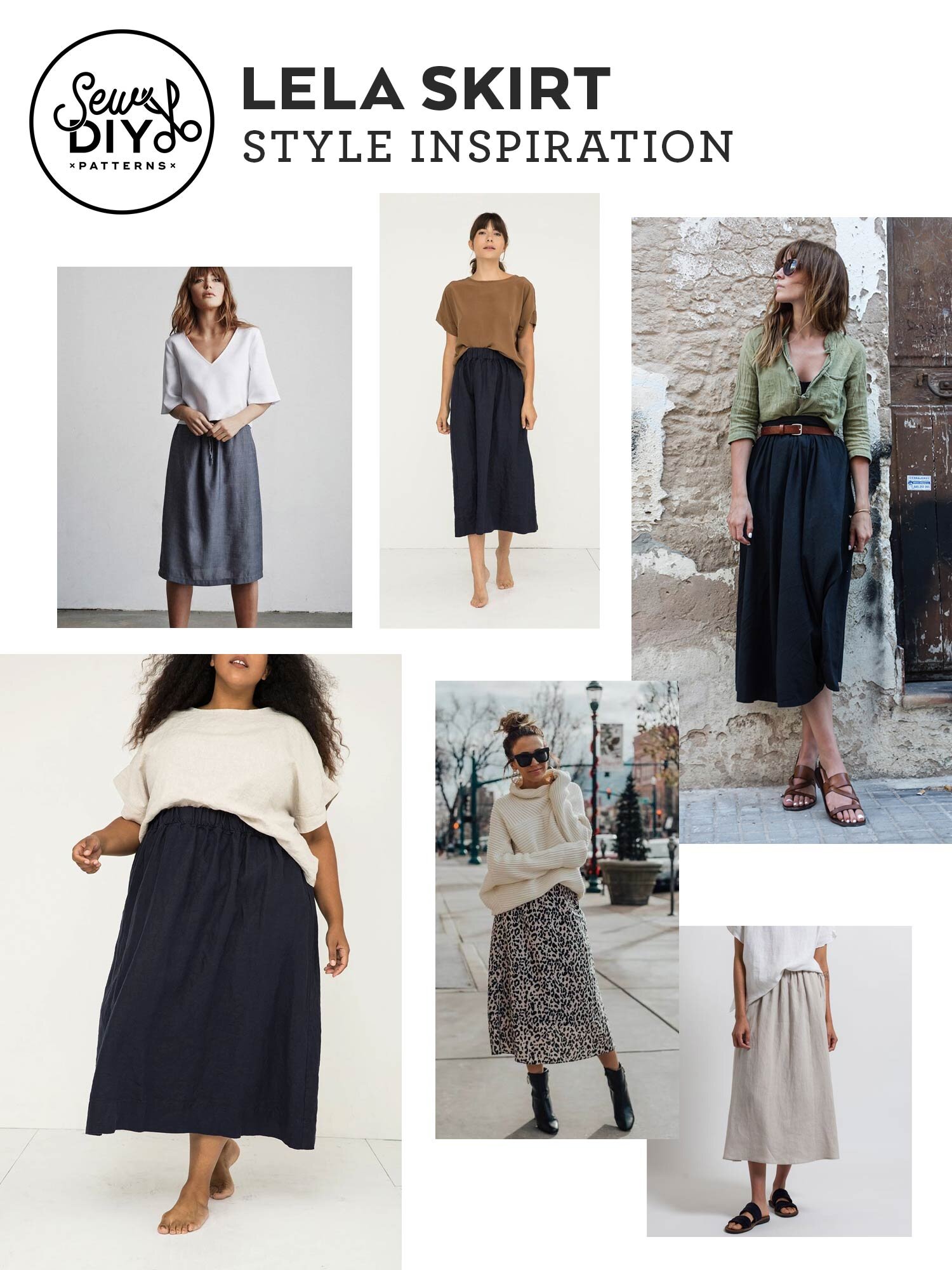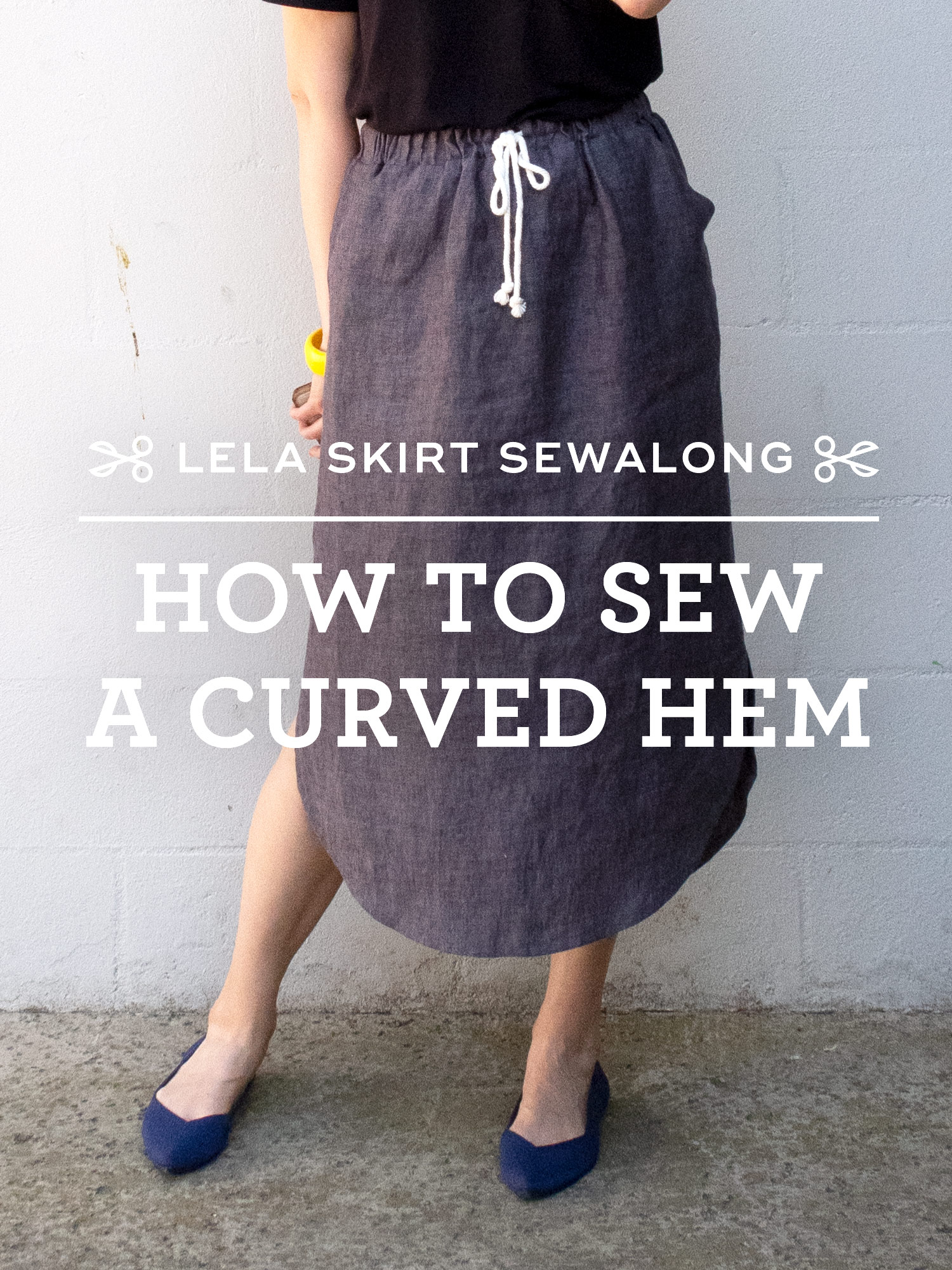Today’s post is going to be pretty short but I feel like the question of selecting one’s size came up a lot during testing so I want to make sure I have the info in one place. (I did talk about sizing a bit in the intro video so I recommend watching that if you haven’t already.) The Lela Skirt is a straight skirt that is fitted at the waist using elastic. The drawstring element is optional as it’s really the elastic that does the work of keeping the skirt on your body.
We recommend selecting your size based on your hip measurement. It’s a good idea to measure your hips when standing up and sitting down as our bodies often change when in different positions. This skirt is designed to have 6” of ease at the hips for all sizes and 16” at the waist. So even if your waist is a few sizes larger than your hips, you’ll likely not need to grade between sizes.
For example, let’s say your waist measurement is 32” (size 16 on the chart) and your hips are 37” (size 10 on the chart). If you select a size 10 the finished hip and waist measurements are 43”. So, you’ll have 6” of ease at the hips and 11” of ease at the waist. When you make the garment you’ll be able to select a length of elastic that is comfortable for your body and to fit the waist to your measurement.
The one exception to selecting using your hip measurement is if your waist measurement is larger than your hip measurement. (Not in a different size but different measurement.) For example if your waist is 36” (size 20 on the chart) and your hips are 34” (size 4 on the chart), then a size 4 may not have enough ease to be comfortable for you.
The other adjustment that you’ll want to think about is the length of the skirt. This skirt is designed for someone who is 5’10” tall but it’s very easy to adjust the length to match your preference. The size chart (shown above) includes finished length measurements. Also note that the back of the skirt is 2” longer than the front of the skirt. So if you want them the same length, just add 2” to the front. The easiest way to decide how long you want your finished skirt to be is to hold a tape measure with one end at your natural waist (or wherever you want the skirt to sit while you’re wearing it) and let the other end of the tape measure hang down to the floor. Then look in a mirror and make a note of where you want the hem of the skirt to end. Compare that length to the length in the chart and adjust as needed.
In conclusion, we find that the amount of ease you have in a garment has a large element of personal preference. Functionally, you’ll want to make sure that the fabric in the waist is large enough to stretch over your hips when you put the skirt on but otherwise it’s personal preference. Some of the pattern testers felt that 6” was too much ease while others felt it was just right. So the great thing about having 17 sizes available is that you can choose what works for your personal preference.




















